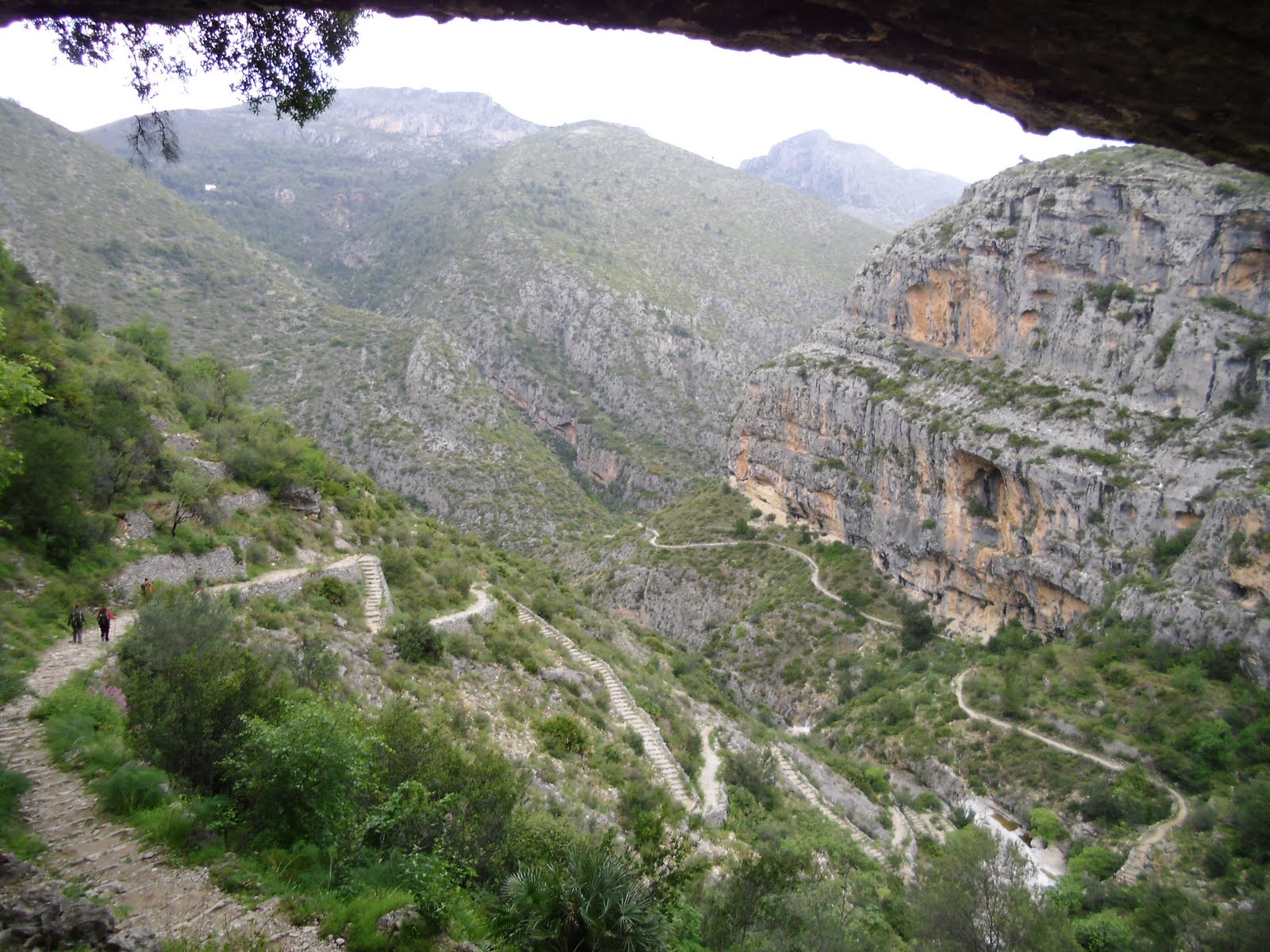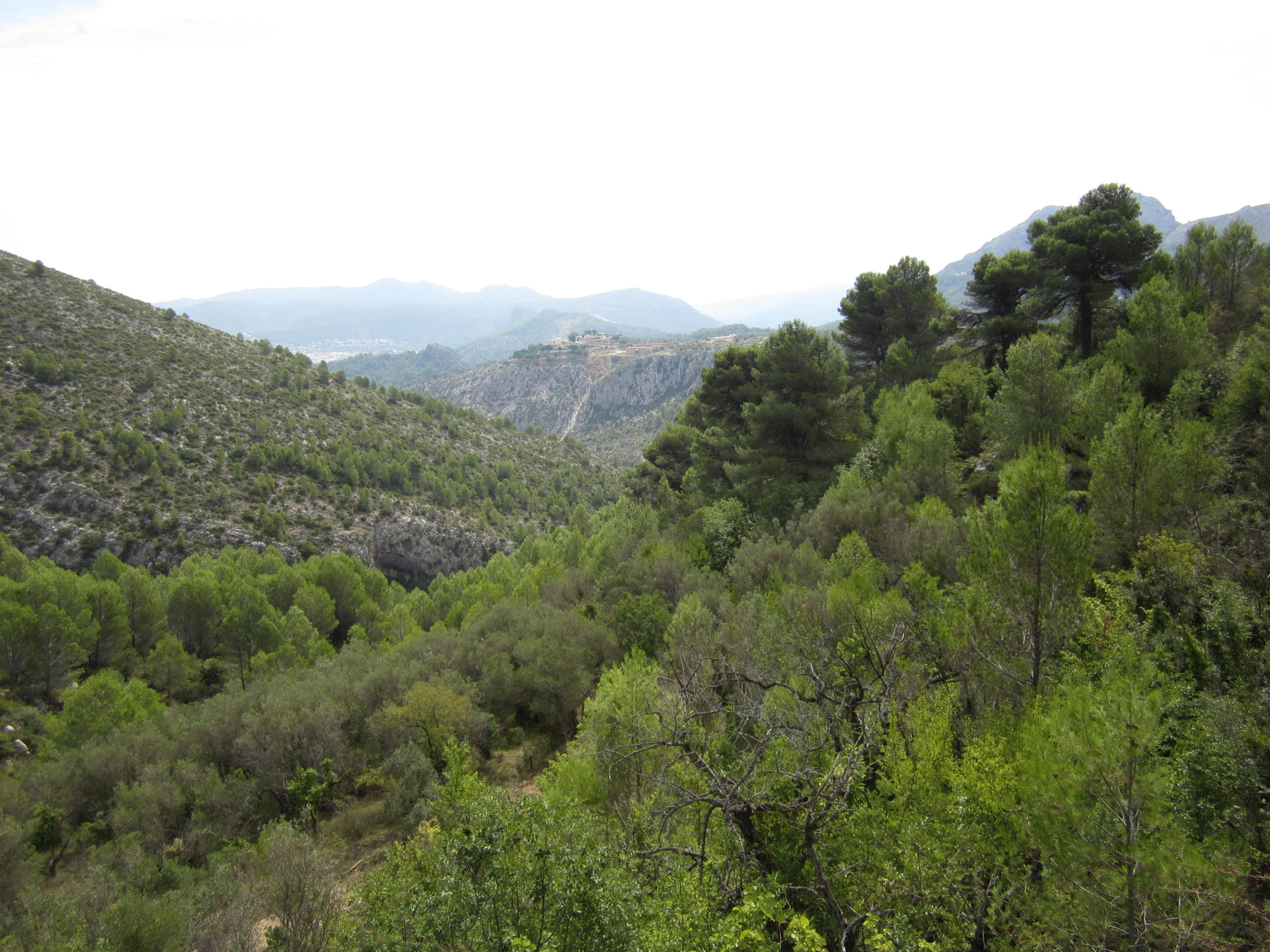Located at an average of 500 meters of altitude, it rises majestically between two mountains that make up this pretty and beautiful valley -last redoubt of the uprising of the Valencian Moors in 1609 against their expulsion decree-.
On one side, the «Barranc de L’Infern», natural wonder, formed by the river Girona, which separates the Sierra de la Carrasca o d’Ebo (of 1000 m. of altitude) from the Sierra del Migdia and crosses the whole valley until arriving at the reservoir of Isbert. On the other side, like an authentic sleeping horse, the Sierra del Cavall Verd or Sierra del Penyó (800 m. high) that rests between the gentle singing of the birds and the rumor of multitude of fountains and natural springs of pure and crystalline waters.
Picturesque valley where visitors are amazed when on their walks they stop to see in the distance, on the clearest days, the Island of Ibiza. There are places of great beauty, magical landscapes, havens of peace and tranquility, where nature is extremely generous, conserving a dense and abundant vegetation.
Description
The Vall de Laguar is one of the paradisiacal places located in the center west of the Marina Alta and north of the province of Alicante (Spain), occupying an area of 23.26 km2.
It is formed by the nuclei of Benimaurell (Pueblo Alto), Campell (Pueblo Bajo), Fleix (Pueblo de Enmedio, where the town hall is located) and, at the entrance of the valley, and forming part of this complex, we find a sanatorium in Fontilles.
It has a typical Mediterranean climate, welcoming its visitors with the warmth of an annual average of 20ºC, with mild winters and hot summers, making you feel, above all, the mountain breeze at night.
In these lands and places visitors can find numerous fountains and natural springs with which to quench their thirst, among them: Font del Camusot, Font dels Olbis, Font del Gel, Font d’Isber, Font del Penyó, Font del Reinós (on the path PRV-147), Font de Fontillles, born in the Sanatorium San Francisco de Borja, and many more…
The Jubeas are a type of dispersed rural habitat located in located in the Northeast end of the Girona River. The name of the Jubeas refers to old country houses that were historically used as a home in times of collection, currently some are in ruins and others reconstructed.
The inhabitants of the valley distinguished between the upper Jubeas and the middle Jubeas, spaces of great beauty whose terraced lands tells us the close relationship between man and the environment. The terraces, nowadays without agricultural activity in their majority, are a fundamental element in the conservation of the natural heritage, since they act against the erosion of the soil. This soil erosion is one of the main causes of desertification, so this landscape reminds us that human activities can help to conserve and even improve the environment.




